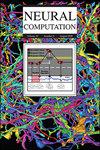Measuring Stimulus Information Transfer Between Neural Populations Through the Communication Subspace
IF 2.1
4区 计算机科学
Q3 COMPUTER SCIENCE, ARTIFICIAL INTELLIGENCE
引用次数: 0
Abstract
Sensory processing arises from the communication between neural populations across multiple brain areas. While the widespread presence of neural response variability shared throughout a neural population limits the amount of stimulus-related information those populations can accurately represent, how this variability affects the interareal communication of sensory information is unknown. We propose a mathematical framework to understand the impact of neural population response variability on sensory information transmission. We combine linear Fisher information, a metric connecting stimulus representation and variability, with the framework of communication subspaces, which suggests that functional mappings between cortical populations are low-dimensional relative to the space of population activity patterns. From this, we partition Fisher information depending on the alignment between the population covariance and the mean tuning direction projected onto the communication subspace or its orthogonal complement. We provide mathematical and numerical analyses of our proposed decomposition of Fisher information and examine theoretical scenarios that demonstrate how to leverage communication subspaces for flexible routing and gating of stimulus information. This work will provide researchers investigating interareal communication with a theoretical lens through which to understand sensory information transmission and guide experimental design.通过通讯子空间测量神经群体间刺激信息传递。
感觉处理产生于跨越多个大脑区域的神经群之间的交流。虽然神经群体中普遍存在的神经反应变异性限制了这些群体能够准确表达的刺激相关信息的数量,但这种变异性如何影响感觉信息的区域间交流尚不清楚。我们提出了一个数学框架来理解神经群体反应变异性对感觉信息传递的影响。我们将线性Fisher信息(一种连接刺激表征和可变性的度量)与通信子空间的框架结合起来,这表明皮层种群之间的功能映射相对于种群活动模式的空间是低维的。据此,我们根据总体协方差与投影到通信子空间或其正交补上的平均调谐方向之间的对齐来划分Fisher信息。我们提供了我们提出的Fisher信息分解的数学和数值分析,并检查了展示如何利用通信子空间实现刺激信息的灵活路由和门控的理论场景。这项工作将为研究区域间交流的研究人员提供一个理论视角,通过这个视角来理解感官信息的传递并指导实验设计。
本文章由计算机程序翻译,如有差异,请以英文原文为准。
求助全文
约1分钟内获得全文
求助全文
来源期刊

Neural Computation
工程技术-计算机:人工智能
CiteScore
6.30
自引率
3.40%
发文量
83
审稿时长
3.0 months
期刊介绍:
Neural Computation is uniquely positioned at the crossroads between neuroscience and TMCS and welcomes the submission of original papers from all areas of TMCS, including: Advanced experimental design; Analysis of chemical sensor data; Connectomic reconstructions; Analysis of multielectrode and optical recordings; Genetic data for cell identity; Analysis of behavioral data; Multiscale models; Analysis of molecular mechanisms; Neuroinformatics; Analysis of brain imaging data; Neuromorphic engineering; Principles of neural coding, computation, circuit dynamics, and plasticity; Theories of brain function.
 求助内容:
求助内容: 应助结果提醒方式:
应助结果提醒方式:


